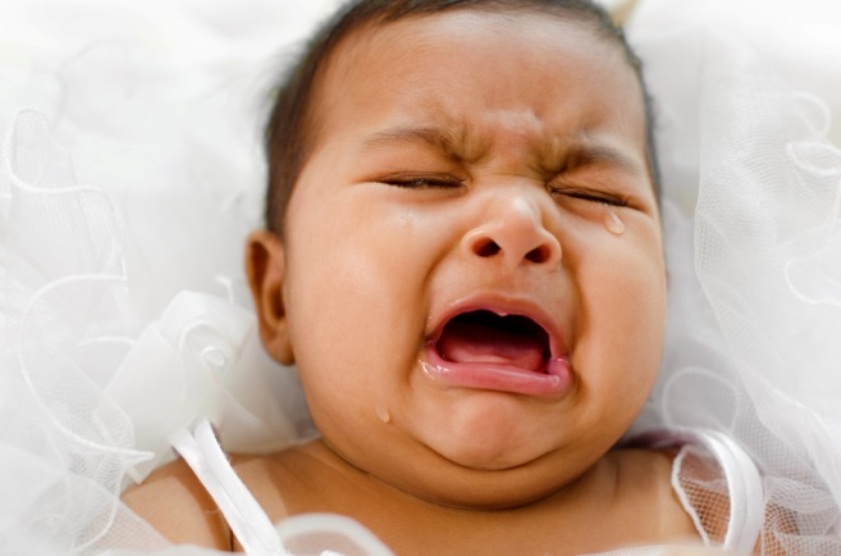Guidelines to Effectively Soothe Your Crying Baby

All babies cry, and some cry a lot. Crying is your baby’s way of telling you they need comfort and care. Sometimes, it’s easy to work out what they want, and sometimes it isn’t. The most common reasons for crying are hunger, a dirty or wet nappy, tiredness, wanting a cuddle, wind, being too hot or too cold, boredom and over-stimulation.
There may be times of the day when your baby tends to cry a lot and can’t be comforted. Early evening is the most common time for this to happen.
Try some of the following ways to comfort your baby. Some may be more effective than others:
- If you’re breastfeeding, let your baby suckle at your breast.
- If you’re bottle feeding, give your baby a dummy. Sterilise dummies as you would bottles. To avoid tooth decay don’t dip them in anything sweet. Some babies find their thumb instead.
- Some older babies will take a bit of cloth to use as a comforter.
- Hold your baby or put them in a sling so that they’re close to you. Move about gently, sway and dance, talk to them and sing.
- Rock your baby backwards and forwards in the pram, or go out for a walk or a drive. Lots of babies like to sleep in cars. Even if they wake up again when you stop, at least you’ll have had a break.
- Find something for them to listen to or look at. This could be music on the radio, a CD, a rattle or a mobile above the cot.
- Try stroking your baby’s back firmly and rhythmically, holding them against you or lying face downwards on your lap. You could also undress your baby and massage them with baby oil, gently and baby oil, gently and firmly. Talk soothingly as you do it and keep the room warm enough.
- Try a warm bath. This calms some babies instantly, but makes others cry even more.
- Sometimes, rocking and singing can keep your baby awake. You might find that lying them down after a feed will help.
- Ask your pharmacist for advice.
Crying during feeds
Some babies cry and seem unsettled around the time of a feed. If you’re breastfeeding, you may find that improving your baby’s attachment helps them settle.
It may be that something you’re eating or drinking is affecting your baby. Some things will reach your milk within a few hours, while others may take 24 hours. All babies are different, and what affects one won’t necessarily affect yours. You might want to consider avoiding dairy products, chocolate, fruit squashes, diet drinks and drinks containing caffeine.
If this doesn’t work, try keeping a note of when the crying happens to see if there’s a pattern. Sometimes, crying during feeds can be a symptom of reflux, a common condition in which babies bring back milk after feeds. Speak to your doctor for more information and advice.
READ ALSO: Are Pacifiers Good For Your Baby? Consider The Pros And Cons
If your baby cries constantly
There are several reasons that can cause a baby to cry excessively, these include:
Colic
Excessive crying could be a sign that your baby has colic. Everyone agrees that colic exists but no one knows what causes it. Some doctors think it’s a kind of stomach cramp. The crying sounds miserable and distressed, and stops for a moment or two, then starts up again, which suggests it could be caused by waves of stomach pain.
The crying can go on for some hours. There may be little you can do except try to comfort your baby and wait for the crying to pass.
Crying and Illness
Although all babies cry sometimes, there are times when crying may be a sign of illness.
Listen for sudden changes in the pattern or sound of your baby’s crying. Often, there’ll be a simple explanation. For example, if you’ve been going out more than usual your baby might be overtired.
If they seem to have other symptoms, such as a high temperature, they may have an illness. Your baby may have something minor, such as a cold, or something treatable, such as reflux. If this is the case, contact your doctor.
Get medical attention as soon as you can if your baby:
- has a weak, high-pitched continuous cry
- seems floppy when you pick them up
- takes less than a third of their usual amount of fluids
- passes much less urine than usual
- vomits green fluid
- passes blood in their stools
- has a fever of 38C or above (if they’re less than three months old) or 39C or above (if they’re between three and six months)
- has a high temperature, but their hands and feet feel cold
- has a bulging fontanelle (the soft spot on a baby’s head)
- has had a fit
- turns blue, mottled or very pale
- has a stiff neck
- has difficulty breathing, breathes fast or grunts while breathing, or seems to be working hard to breathe (for example, sucking in under the ribcage)
- has a spotty purple-red rash anywhere on the body (this could be sign of meningitis)
If you think there’s something wrong, always follow your instincts and contact your doctor.
Getting help with a crying baby
If you’ve decided to talk to your GP it can help if you keep a record of how often and when your baby cries. For example, this might be after every feed or during the evening. This can help your GP work out whether there is a particular cause for the crying.
If you don’t have anyone who can take care of your baby for a short time and the crying is making you stressed, put your baby in their cot or pram, make sure they’re safe, close the door, go into another room and try to calm yourself down. Set a time limit (for example, 10 minutes), then go back.
Never shake your baby
No matter how frustrated you feel, you must never shake your baby. Shaking moves their head violently, and can cause bleeding and brain damage.
Culled from nhs.uk



Thanks for sharing
Very much informative. Thanks MIM for sharing.
Thanks MIM
Nice article
Noted
Thanks MIM
Thanks MIM
Thanks for this info
Noted thanks for sharing
this is nice one. thanks for sharing.
Thanks for sharing.
tnx mim
Thanks mim
Noted